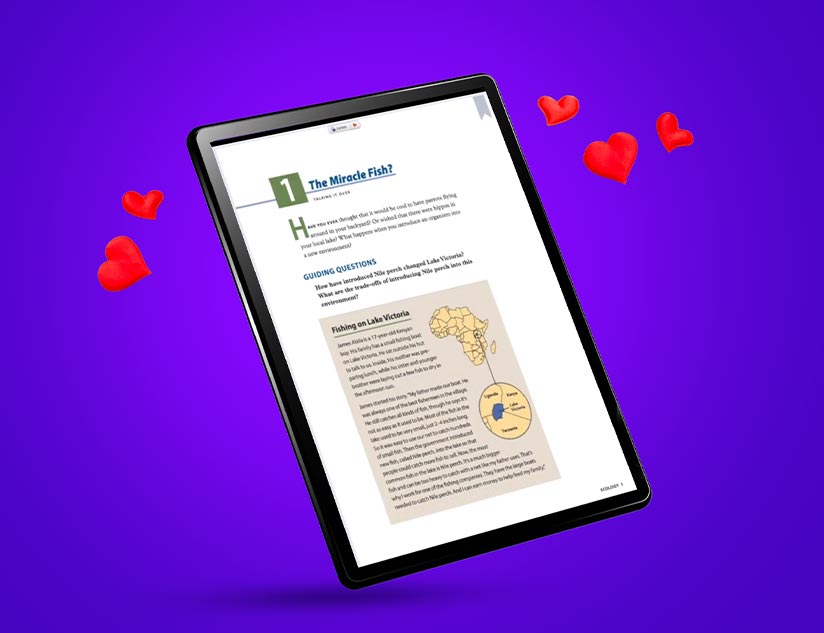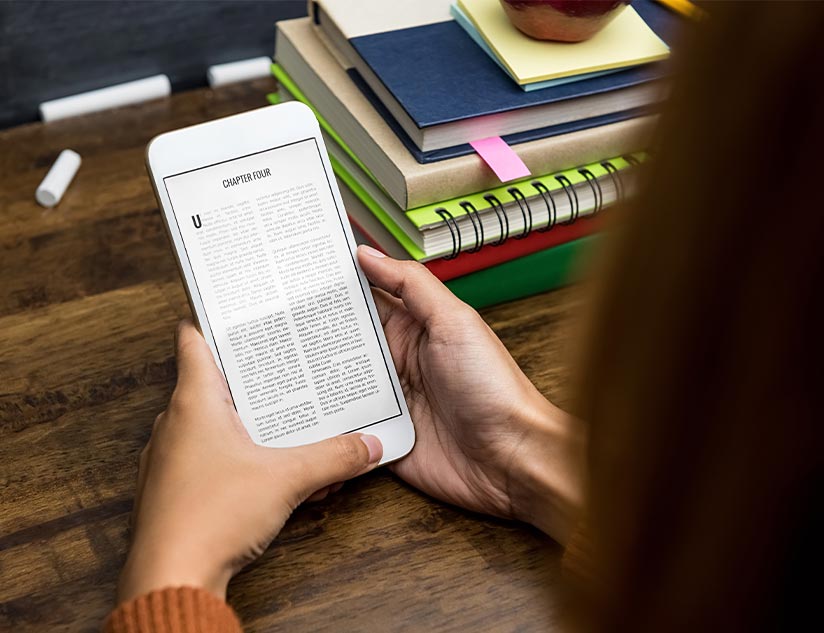Bringing technology tools into the classroom has proven to have positive consequences in terms of the quality of learning. There is no denying that both students and teachers agree that the use of eBooks offers benefits for education. It offers an effective way to free education from the boundaries of school walls and timings. The education sector is becoming increasingly aware of the advantages offered by EdTech, which is only highlighted by predictions that revenues for the eBooks segment alone is likely to grow from $13,687 million in 2019 to $15,250 million by 2023. The reason for this is clear – eBooks simplify learning and enhance the overall experience.
Here’s a look at some of the major ways in which eBooks prove to be incredibly valuable for education.
Benefits of Using eBooks in Classrooms
Since as far back as 2014, there has been state support for a transition of K-12 education to a digital curriculum. In collaboration with various tech companies, the US federal government had released a 70-page guide for schools, the Digital Textbook Playbook, which was intended as a “roadmap for educators to accelerate the transition to digital textbooks.” However, the education sector has been slow in adopting classroom tech. A look at what can be gained through a digital transformation might help the process.
Interactive Elements
Page after page of text, interspersed with some poor quality images, don’t really make for the most engaging educational material. In addition, there are concepts that might be difficult to understand, regardless of how much text is used to explain them. This is where eBooks can work wonders. With their ability to integrate multimedia and interactive elements, they turn students from passive recipients of knowledge to active participants in the learning process.
The student generation of today is well versed in the language of digital content, being huge fans of Netflix and YouTube. No wonder then that research reveals the 81% of teachers accept that “tablets enrich classroom education.” eBooks can include a large number of interactive features such as pen tools, annotations, search option, page zoom, read aloud and much more. These tools help students in making notes, highlighting content, bookmarking chapters and pages, or even changing the font and brightness according to their convenience. Text-to-Speech functions can ensure greater accessibility for students with visual impairment, learning disabilities or dyslexia.
In addition, adding music, videos, animations, audio explanations, etc., to the learning module can make the experience much more interesting, while allowing students the ability to pause, go back and review and even have fun learning new things. eBooks also allow easy incorporation of gaming technologies, multimedia features, interactive quizzes and puzzles. These features allow the user to make stronger connection with the material.
Anytime, Anywhere Learning
Did you know that carrying a 12-pound backpack to school and back, lifting it 10 times a day on average for just one school year exerts a cumulative load of 21,600 pounds, which is equal to the weight of six mid-sized cars! This could lead to even the healthiest of children developing back problems.
With eBooks, the entire curriculum can be fitted into a single mobile device, which is lightweight and easily portable. No more lugging heavy books everywhere. This means that students can access any topic of their choice, from any subject, whenever the motivation to learn strikes them. In fact, with digital learning platforms like MagicBox™, the learning modules can even be accessed in the offline mode, making anytime, anywhere learning truly possible. Classroom material can be organized digitally, and students can choose to learn on the device of their choice, at their own time and pace.
With eBooks, not only can self-directed learning be encouraged, but a wide range of learning styles can be easily accommodated.
Updated Content
According to Moore’s law, technology grows at an exponential rate. Till about three decades ago, no one owned a computer, and till a decade ago, a smartphone was a rarity. In 2019, there are almost 266 million smartphone users in America alone. In this age of rapid technological advancements, information becomes obsolete very quickly. It is difficult to keep up with the pace of change with print textbooks, which have a long time-to-market schedule.
There are no such constraints with eBooks. All the content is stored on the cloud, from where authorized people can access it anytime, anywhere. Content can be quickly added, modified or updated. Not only does this save time, it also saves significantly on costs that would have been incurred to print fresh editions of textbooks.
Inclusive Learning
The student debt in America stands at around $1.4 trillion. In fact, the average cost of textbooks for higher education has increased four times faster than the inflation from 2008 to 2018. This can be attributed to the monopoly of the textbook market being in the hands of a few large publishers. So much so that it is estimated that the average student spends as much as $1,200 on books alone each year. Moving to eBooks with inclusive access can give leverage to higher education institutes to negotiate a bulk deal with the publisher and make eBooks more affordable than traditional textbooks.
Customized, Regular Assessments
Instead of having a traditional quiz at the end of the chapter, eBooks can be filled with exercises and quizzes within the lesson as well. This ensures that students revise and retain information better. In addition, teachers can create customized assessments and benefit from key learning analytics, tracking the learning progress of each student. This can help them provide students individual support, as and when they need it. The end result is better academic outcomes.
They are Eco-Friendly Too!
If all these benefits aren’t enough, eBooks are great for our planet too. They help reduce consumption of paper and use of packaging materials, such as plastic. They also help in reducing the energy needs, associated with printing, packaging and delivery of print textbooks. In preparing a whole generation for the future, it only makes sense that educational institutions also pay attention to preserving the planet, so that the students have a future to look forward to in the first place.
The Future of Classroom Technology
eBooks are only the beginning of classroom technology. Emerging tech like augmented reality (AR), virtual reality (VR), artificial intelligence (AI) and 3D printing, among many others, hold huge promise for the future of education. Some early applications of AR/VR have already proven how effective they are in helping students quickly grasp difficult concepts, experience real world applications of classroom learning and even experiment with the applications of concepts learnt in the classroom. They have huge potential to make learning incredibly immersive, which would lead to significantly better educational outcomes.
Imagine taking students for a virtual field trip to see the ancient ruins of Rome that they read about in History class. It would give an opportunity even to students with various types of disabilities or economic constraints to share common experiences. The same holds true for 3D printing. Students could see real life, three-dimensional views of the human anatomy, engineering concepts, architectural models and more. They could even test their own innovative models in a safe and cost-effective way. Theory would turn into reality right before their eyes, making it so much easier for them to understand the concepts being taught.
Daydreaming about what can be might seem very enticing. However, we already have the first step towards a bright educational future on hand, in the form of eBooks. If nothing else, teachers would at least feel thrilled that students no longer can use the excuse that “the dog ate my homework!”












